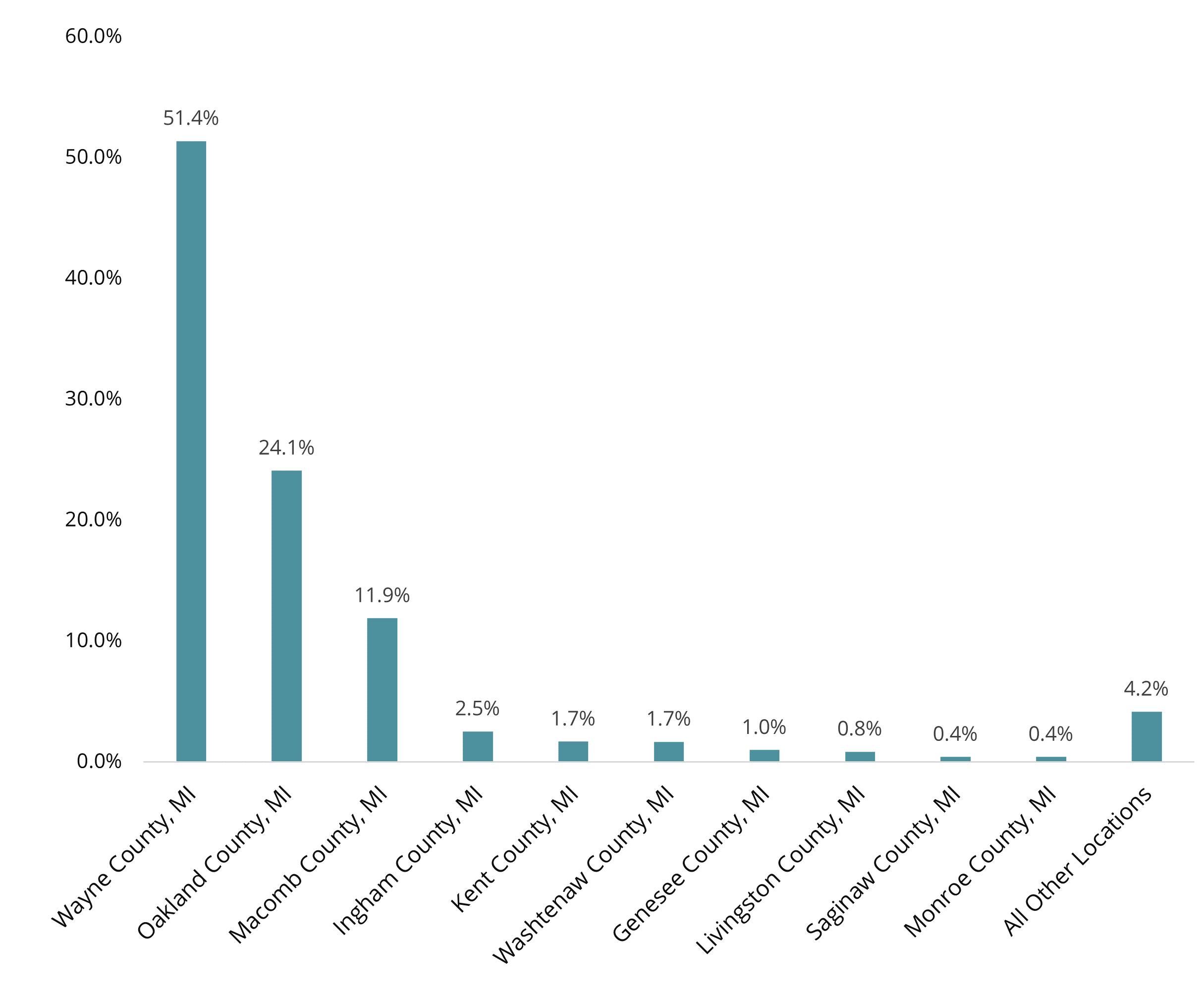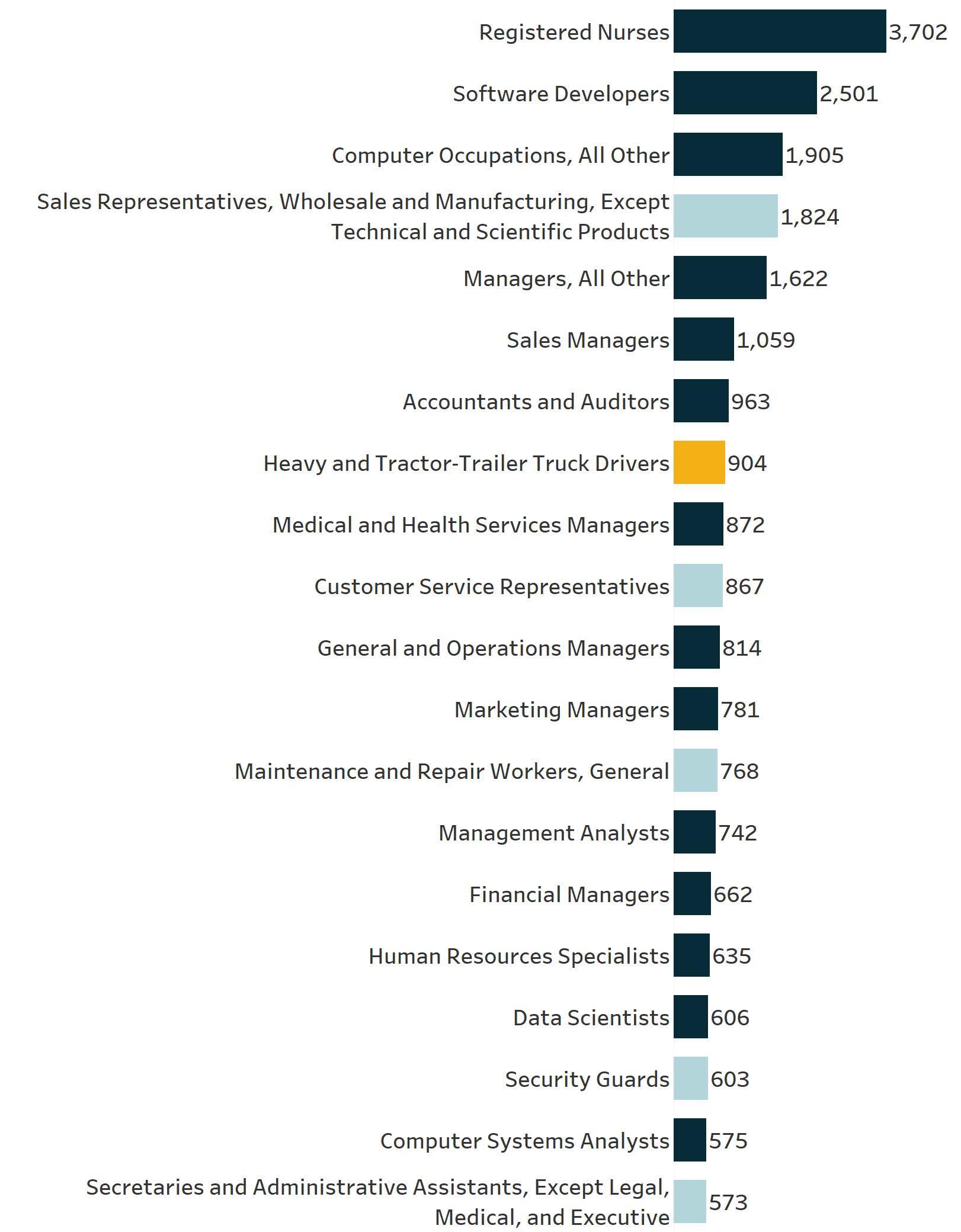
3 minute read
Workforce Overview
City of Detroit Q3 2022 LABOR FORCE, EMPLOYMENT, AND UNEMPLOYMENT
The labor force in the City of Detroit experienced growth year over year from 2015 through 2020 and peaked in 2020 with 262,129 workers. During the pandemic, the labor force marked a 7.7 percent decline to 241,955 but has since increased to 250,101, 3.3 percent over 2022. Employment showed a similar trend, with growth year after year from 2012 through 2019. The COVID-19 pandemic ushered in a significant drop, with employment dipping 10.2 percent in 2020 over 2019. In Q3 2022, employment increased to 227,467 or 4.2 percent over 2021. Meanwhile, the number of unemployed individuals in the City of Detroit declined by 4,876 workers, or 20.5 percent, between 2021 and Q3 2022.
CENSUS 2020 LABOR FORCE DEMOGRAPHICS
During 2020, there were 286,678 individuals in the labor force, meaning they were either working or looking for work. Employed workers make up 85.1 percent of the city's labor force. The highest unemployment rates in 2020 were seen in those aged 24 years old or younger, with 65.6 percent of unemployed individuals identifying as males compared to 55.5 percent of unemployed individuals identifying as female. Overall, males have a higher unemployment rate than females, at 17.1 percent and 12.9 percent respectively. Black or African American, Native American, and job seekers that identify as Two or More Races faced the most challenges in securing employment, with each group experiencing an unemployment rate of approximately 17 percent in 2020.

Data: Bureau of Labor Statistics
2020 Census Population
According to the Census Bureau 2020 ACS Five Year estimates, the City of Detroit had a population of 672,351 people. The sex of the populace was split almost evenly, with about 52.7 percent of the population identifying as female, and the other 47.3 percent identifying as male. The majority of the population identified as Black or African American (77.1 percent) with the second largest number of individuals identifying as White (14.4 percent). The city's age demographics skew younger than the surrounding region; 26.0 percent of the population was over the age of 54, compared to 35.0 percent under the age of 25, while 39.1 percent of the population fell between the ages of 25-54.
Population Gender Demographics
52.7% Female
47.3% Male
Population Race Demographics
Population Age Demographics

According to the most recent OnTheMap data set from the Census Bureau Detroit's 2019 workforce consisted of 195,233 residents. 31.7 percent of the residents also worked in the city, while the remaining 68.3 percent traveled outside for work. With 235,654 workers employed in the city during 2019 there were 73.7 percent living outside of the city and commuting in. While there is a higher percentage of both inbound and outbound commuters in Detroit than other areas of the WIN regions, Detroit is ultimately a net importer of jobs, with more workers commuting into the area for employment than leaving.
Where City of Detroit Residents Work Where City of Detroit Workers Live


Source: U.S. Census OnTheMap, 2019 Analysis: Workforce Intelligence Network Source: U.S. Census OnTheMap, 2019 Analysis: Workforce Intelligence Network

City of Detroit Q3 2022 TOP POSTED JOBS
Top Posted Jobs
Registered Nurses is the highest in-demand occupation during Q3, with 3,702 unique online job postings. Software Developers is the second largest occupation with 2,501 postings. Computer Occupations, All Other (1,905 postings) round out the top three occupations in Q3. Many of these positions require a bachelor's degree, which is common in over half of the top 20 posted jobs in the city.


Top Posted Entry-Level Jobs
Entry-level jobs, which usually require zero to two years of previous experience, account for 24.2 percent of postings in Detroit. Four of the top ten entry level occupations require a bachelor’s degree, while the remaining six require a high school diploma, postsecondary non-degree award, or some college with no degree. Those who enter the workforce with a college degree can expect entry wages nearly double from those without. Registered Nurses were the top posted entry-level job with 1,572 postings requiring zero to two years of experience and a bachelor’s degree.










